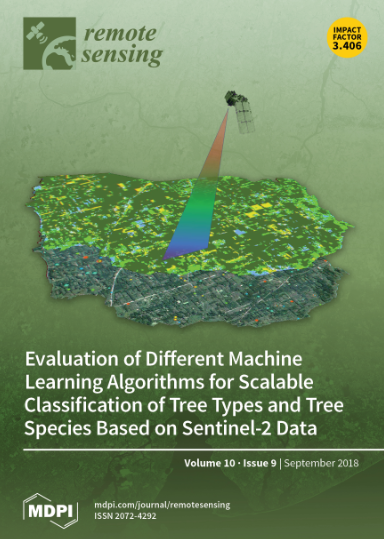二维 Legendre 多项式法提取内部潮汐信号
IF 4.1
2区 地球科学
Q2 ENVIRONMENTAL SCIENCES
引用次数: 0
摘要
本研究采用二维 Legendre 多项式拟合(2-D LPF)方法,从东经 53°-131°、南纬 34°-6°N区域的卫星测高数据中拟合 M2 潮汐谐波常数,提取作用于海面的内潮信号。M2 潮汐谐波常数是通过潮汐分析从 TOPEX/Poseidon (T/P)、Jason-1、Jason-2 和 Jason-3 卫星的海面高度(SSH)数据中得出的。我们将二维 LPF 方法与 300 公里移动平均(300 公里平滑)方法和一维 Legendre 多项式拟合(一维 LPF)方法进行了验证。通过 42 个轨道的交叉验证,确定一维 LPF 的最佳多项式阶数为 7,二维 LPF 的经向和纬向的最佳多项式阶数分别为 8 和 7。二维 LPF 方法显示了内部潮汐信号优越的空间连续性和平滑性。进一步的单轨相关性分析证实,该方法与地形和密度扰动的相关性普遍较高(相关系数:0.502,0.620,0.245;0.420,0.273,-0.101),突出了其准确性。总之,二维 LPF 方法可以利用所有区域数据点,克服了单轨道方法的局限性,证明了其在提取作用于海面的内潮信号方面的有效性。本文章由计算机程序翻译,如有差异,请以英文原文为准。
Two-Dimensional Legendre Polynomial Method for Internal Tide Signal Extraction
This study employs the two-dimensional Legendre polynomial fitting (2-D LPF) method to fit M2 tidal harmonic constants from satellite altimetry data within the region of 53°E–131°E, 34°S–6°N, extracting internal tide signals acting on the sea surface. The M2 tidal harmonic constants are derived from the sea surface height (SSH) data of the TOPEX/Poseidon (T/P), Jason-1, Jason-2, and Jason-3 satellites via t-tide analysis. We validate the 2-D LPF method against the 300 km moving average (300 km smooth) method and the one-dimensional Legendre polynomial fitting (1-D LPF) method. Through cross-validation across 42 orbits, the optimal polynomial orders are determined to be seven for 1-D LPF, and eight and seven for the longitudinal and latitudinal directions in 2-D LPF, respectively. The 2-D LPF method demonstrated superior spatial continuity and smoothness of internal tide signals. Further single-orbit correlation analysis confirmed generally higher correlation with topographic and density perturbations (correlation coefficients: 0.502, 0.620, 0.245; 0.420, 0.273, −0.101), underscoring its accuracy. Overall, the 2-D LPF method can use all regional data points, overcoming the limitations of single-orbit approaches and proving its effectiveness in extracting internal tide signals acting on the sea surface.
求助全文
通过发布文献求助,成功后即可免费获取论文全文。
去求助
来源期刊

Remote Sensing
REMOTE SENSING-
CiteScore
8.30
自引率
24.00%
发文量
5435
审稿时长
20.66 days
期刊介绍:
Remote Sensing (ISSN 2072-4292) publishes regular research papers, reviews, letters and communications covering all aspects of the remote sensing process, from instrument design and signal processing to the retrieval of geophysical parameters and their application in geosciences. Our aim is to encourage scientists to publish experimental, theoretical and computational results in as much detail as possible so that results can be easily reproduced. There is no restriction on the length of the papers. The full experimental details must be provided so that the results can be reproduced.
 求助内容:
求助内容: 应助结果提醒方式:
应助结果提醒方式:


